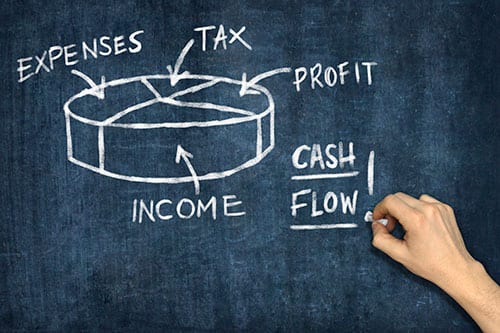Top 10 Business Cash Flow Strategies
Business cash flow as a concept is simple. Cash flow is the movement of cash in and out of a business. The two types of cash flow are positive and negative. Positive cash flow is when the cash register is ringing, or the bank deposits are happening such that more is coming in than is going out. Negative cash flow is the opposite and often a signal of a failing business.
Only concentrating on profits can be a big mistake. Cash flow involves much more than just profit. Inventory and other costs and expenditures can create a negative cash flow that overwhelms the profits and sucks money out of the company. When this negative cash flow continues too long, it can take a company into bankruptcy. Here are 10 solid strategies for cash flow management to maintain a healthy businessi.
- The cash flow analysis – There are software accounting or bookkeeping packages that provide a cash flow analysis feature, or your accountant may provide a solution for you. What you want to do is a regular analysis of inflows and outflows of cash to catch potential problems early.
- Collect those late payments – If your business produces receivables, especially those that get most or all their income from invoicing and waiting for payment, have a process to encourage on-time payment and to collect past due amounts. To start, even if you factor in some extra to cover it, offer an incentive for faster payment. You have probably seen invoices with something like “5%/10 Net 30” in the terms. The invoiced party knows that paying within 10 days allows them to take a 5% discount, while waiting past 10 days means they owe the entire amount within 30 days; they are past due after that. Having a late payment penalty also helps to spur action.
- Make payment easier or more efficient – While there are still some old-fashioned companies out there that want to mail a check, most understand that doing so costs more money than using other payment methods. Give them a Pay Now button in your invoices, encourage credit card payment with the click of a mouse.
- Automated payment reminders – Especially if you hate “dunning” customers/clients, having an invoicing system that allows you to set up automated reminders at specific points after the invoice date will help. Setting up reminders at certain points after invoice delivery, including escalating demand statements, is a good strategy.
- Change your billing and payment terms – If you consistently run longer than desired payments on receivables, you may want to look at your terms for opportunity to make changes. Assuming your reminders and other methods have not been effective, you may want to change to a partial deposit system or some other upfront payment agreement.
- Cut your expenses – If you are experiencing negative cash flow, find out where you are spending money and which, if any, expenses can be reduced or eliminated. Often when things are going well, a business will take on expenses that they can cut when they have cash flow issues. In your cash flow analysis, look for expenses that are not necessary for the business or to deliver products or services.
- Invoice factoring or financing – For those businesses that have stretched-out receivables, there are lenders that specialize in buying those receivables at a discount, also called factoring. If you prefer, there are also lenders that loan money against a historically reliable receivable balance.
- Increase your sales or profits – If you do not have room to cut expenses and your receivables are under control, then you may want to look at increasing your business volume with better marketing or advertising. Or you may speed up income with a sale or discount offer to spur purchases. If that is not enough or a good solution, analyze your pricing structure and costs of production and delivery of products or services. Do so with the goal of increasing your profit margin.
- Delay payments or use a business credit card – Spreading out or delaying payment can solve short-term negative cash flow situations. Buying inventory on a credit card and spreading the payments out over the period it takes to exhaust the inventory can be better than paying for it all upfront.
- Have a cash reserve – When cash flow is good, put some of it into a cash reserve to cover shortfall periods. Many businesses have ups and downs as a regular part of doing business. Setting some aside in the ups gives you a cushion for the down periods.
Of course, an excellent strategy is to hire accounting expertise and let them help you to set up a cash flow management plan.
i Cash flow management strategies, BrooksCity.com

